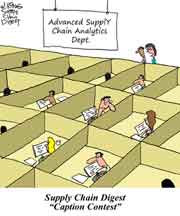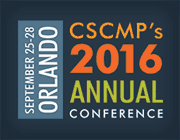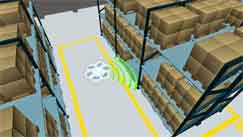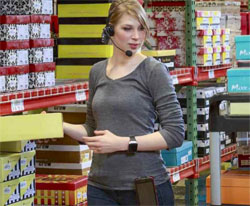 |
October 21, 2016 - Supply Chain Flagship Newsletter |
 |
| FEATURED SPONSOR: DEMAND SOLUTIONS |
|||
 |
|||
| Download a New White Paper: "Five Things You Can Do This Week to Reduce Inventory" to Help Jump-Start Your Inventory Reduction Initiatives |
|||
 |
|
|||||||||||||||||||||||||||||||||||||||||||||||||||||||||||||||||||||||||||||||||||||||||||||||||||||||||
MHI wants to make its conference a "world class supply chain event," attracting attendees beyond its own MHI members. In the past, the conference had some good content from outsiders, but was at least as much dominated by meetings of the numerous MHI industry groups. Starting two years ago, that aspect is somewhat downplayed, and the external speakers and content are on the rise - though perhaps flatlining versus last year, as I will explain below I simply don't have room for a full report on the panel in this column, but will do so separately next week. Here, just a couple of notes just on workforce: Mike Regan of TrazAct Technologies believes the US truck driver shortage is very real, and that if the economy ever gets back to 3% growth, major issues with transportation capacities and rates are sure to follow. Jonathon Rader of FedEx says the "talent crisis" is also very real, and that both white collar and blue collar employees are increasingly less interested in careers in logistics, noting the challenge in attracting and keeping workers in distribution center operations really is at crisis-type type levels right now. A Monday keynote was from Buddy Bush, who despite the name is a female consultant in the HR area. Her focus was basically millennials in the work force, though I was glad she started out by pulling up examples of media asking "what's going on with this generation?" going back to the 1970s - she says it happens like clockwork about every 10 years. There's no doubt millennials are looking for a positive work environment ("I am valued and not just a cog in the machine"), and comments from employees of companies on sites such as Glassdoor really do have an impact on whether many millennials will come to work from you. Millennials really do want to feel like they are doing something that has social value of some kind, and Bush cited the example of a recruiting company that received lackluster response from a program to increase revenues but got much more engagement when the goal was turned from a financial one to focus on "finding jobs for 2500 workers." Millennials also value work flexibility very much, and there is more companies can usually do to provide that than they realize, Bush said. Millennials also want a lot more communication - at least daily from their managers - than past generations. The good news is that this increased communications is basically free, Bush noted. All that said, retaining millennials for long periods will remain a challenge, and perhaps the goal really should be to simply extended tenures a bit versus expecting long term retention. Bush noted an example of one company that was very clear about its expectations during the interview and hiring process - "We expect you to stay for at least two years" - that had some impact on the results. There was a lot about drones at the conference - like, really a lot - but it was mostly interesting. Before then, an operator had to be a licensed pilot for traditional aviation before he or she could become authorized for controlling a drone. Now, such a certification can be received after a week of classroom and hands on training. The ease of qualifying has already led to the certification of some 13,000 drone operators since the start of September.
That using a $3000 drone you can buy from Amazon. A $1000 version is coming soon. Evans and his funky CTO "X" agree that in logistics, parcel delivery is further off than other applications that are being deployed right now. That idea was then carried on in a later session on disruptive technologies that included a presentation by Matt Yearling, CEO of PINC Systems, which provides several drone-based applications. That includes drones taking inventory of trailers in large yards outside distribution centers, which fly at speeds upwards of 40 miles per hour and read RFID tags attached to trailers. Even for very large yards, a full inventory can be taken in maybe 30 minutes. Such a system really only makes sense for large, densely packed yards, Yearling said, but for those applications there is a high ROI. But again, by using drones and RFID, inventory and location accuracy can be tremendously improved, Yearling said. Most promising of all may be taking physical inventories inside the DC using drones, an application Walmart has said it is testing. In that app, a drone flies the aisles (usually during off-shifts), using imaging systems to read location labels and license plate bar codes on stored pallets. This takes just a fraction of the time it does to use humans to take such inventories, allowing some companies to execute the process every day, Yearling noted. In that same session, we heard from an executive at APX Labs, which has developed DC applications using smart glasses, in which things like picking locations are made visible to workers using the glasses, such that for example you might create a "virtual put wall" without physical lights normally required. Deployment of smart glass applications is farther along that I realized, and the APX exec noted that they still use a Bluetooth bar code ring scanner versus just "looking" at the bar code through the glasses because it is actually faster and avoids ergonomic issues associated with tilting heads to get the read angle right. MHI is making incremental progress in attracting non-members. I saw badges from companies such as Target, Home Depot, and others, but the pace of that shift appears to be modest. At some point, MHI will need to "cross the chasm" and make some major efforts to expand the audience - and thus lose some of the "inside MHI" aspects of the event. That will cost some money - we will see if MHI is ready to further pony up to the bar to make that change happen faster.
|
||||||||||||||||||||||||||||||||||||||||||||||||||||||||||||||||||||||||||||||||||||||||||||||||||||||||||
|
||||||||||||||||||||||||||||||||||||||||||||||||||||||||||||||||||||||||||||||||||||||||||||||||||||||||||
|
||||||||||||||||||||||||||||||||||||||||||||||||||||||||||||||||||||||||||||||||||||||||||||||||||||||||||
|
|
|
YOUR FEEDBACK
We're just featuring this week an interesting email exchange relative to a point made by Thomas Moore of Warehouse Optimization on a recent Supply Chain Newsmakers video, which argued that shippers can have much to gain through a better understanding - load by load - of their carriers' true weight limits.
David Schneider of David K. Schneider & Company took some exception to this notion, as you can see from his email below, and then Moore's interesting response back.
Both are friends of SCDigest - and we would be happy with one more repost from Schneider!
Feedback on Knowing Carriers' True Weight Limits
![]()
The video segment brought this phrase to my mind: "Your performance will vary."
I’m not calling bull s--t on what the fellows from Warehouse Optimizers talked about, but there are practical factors that I think could be wrongly defined as "tribal" knowledge.
Fuel weighs something: Over the road diesel weighs about 7.1 pounds per gallon. So every 100 gallons of fuel on board adds 710 pounds to the GVW of the rig. Many drivers know this, and will wait to fuel until after they have scaled their load if they know that they are close to the 80K limit. Is this "tribal knowledge?" No, as it is something that is taught in many of the driver schools. While a local delivery rig may hold only 45 gallons of fuel in each side tank, it is not unusual to see rigs with 130 gallons on each side, sometimes more.
Driver and driver's gear weigh something: The driver's weight is obvious, but people tend to forget that drivers often live in their tractors - and the belongings can weigh in.
Accessories on the truck: Snow Chains, HazMat kit, skirts, Aero-tails, APU units, again, these all add weight.
Trucking companies do not have high consistency across the fleet. They may specify the same basic model, but the accessories will change the weight of the tractor and the trailer from unit to unit. Metal roof trailer or translucent plastic roof? Hardwood trailer floor or a composite material? E track or logistics track (they are different).
What is getting identified as "tribal: is really a reflection of the variability of vehicle weights based - the complexity of the fleet. If you ask a trucking dispatcher, a driver, or an executive what a truck weighs, they are going to give you the "average" because they recognize that the weight of a truck depends on many factors that are out of control.
David K. Schneider
David K Schneider & Company, LLC
Response from Moore:
This is great! It typifies the response that we often see. The Tribe has a set of assumptions that generate "safe" answers. Here is a very concrete example from companies that shall remain nameless - the total weight that refrigerated trucks can carry:
Company 1 45,000
Company 2 44,000
Company 3 43,500
Company 4 42,000
They all use about the same carrier base!
Data is the key. We took Swift's and JB Hunt's fleets and weighed the various combinations of tractors and trailer a few years back. Yes there was variation and yes we could not take the lightest tractor and the lightest trailer as our standard - but we developed a standard that 95% of the fleet could easily meet.
In another example, it turned out that JBH intermodal had a habit of sending sleepers into the client to drive the 25 miles to the ramp -the client asked them to stop doing that so they could get the extra weight on the loads. Will Cotten's example in the video is real. He ran many loads for, what turns out to be, one of our current clients!
To put this all in perspective, 8 years ago we got about 880,000 records of 5 axle trucks weighed by the DOT. Of those that were clearly weighted out (more than 69K gross) a very large number(81%) had >3000 gross weight available.
Thomas Moore![]()
SUPPLY CHAIN TRIVIA ANSWER
Q: What has been the annual average growth rate in North American spending on 3PL services over the last 10 years?
A: 4.0%, well above GDP growth of 1.4%, according to data from Armstrong & Associates, though the growth rate in 2015 was just 1%, and actually down a bit globally for reasons that aren’t clear.
| © SupplyChainDigest™ 2003-2016. All Rights Reserved. SupplyChainDigest PO Box 714 Springboro, Ohio 45066 |
POWERED BY: XDIMENSION
|







 Evans noted that virtually any job that involves a human going up on ladders, lifts and other equipment to inspect machinery, facilities or some other object is likely to soon move to drone-based systems. Skyward cutely launched a drone at the outdoor breakfast Monday, and an hour later attendees saw crystal clear aerial views of the hotel and conference center, then converted that to elevation views.
Evans noted that virtually any job that involves a human going up on ladders, lifts and other equipment to inspect machinery, facilities or some other object is likely to soon move to drone-based systems. Skyward cutely launched a drone at the outdoor breakfast Monday, and an hour later attendees saw crystal clear aerial views of the hotel and conference center, then converted that to elevation views.

